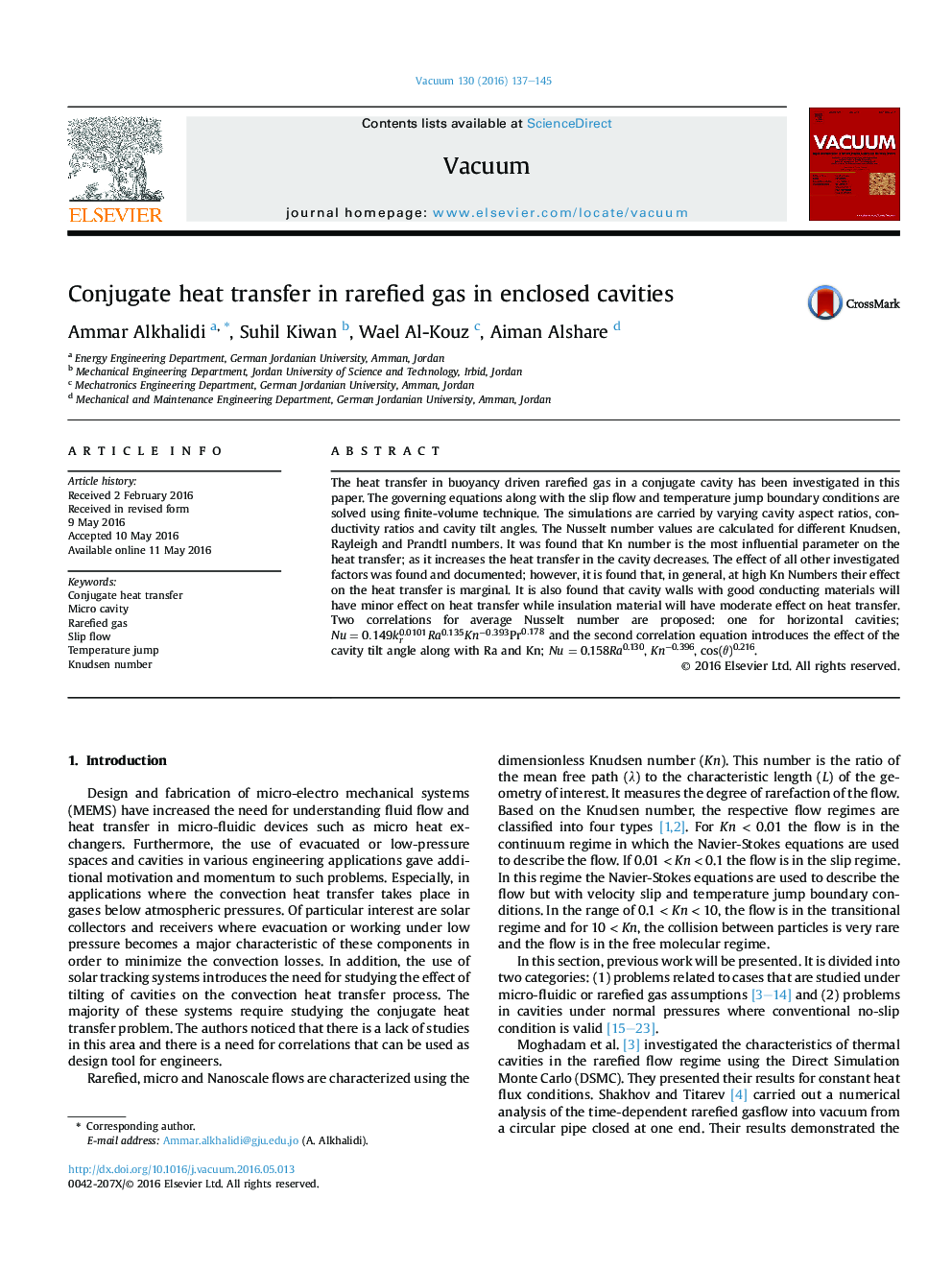| Article ID | Journal | Published Year | Pages | File Type |
|---|---|---|---|---|
| 8044871 | Vacuum | 2016 | 9 Pages |
Abstract
The heat transfer in buoyancy driven rarefied gas in a conjugate cavity has been investigated in this paper. The governing equations along with the slip flow and temperature jump boundary conditions are solved using finite-volume technique. The simulations are carried by varying cavity aspect ratios, conductivity ratios and cavity tilt angles. The Nusselt number values are calculated for different Knudsen, Rayleigh and Prandtl numbers. It was found that Kn number is the most influential parameter on the heat transfer; as it increases the heat transfer in the cavity decreases. The effect of all other investigated factors was found and documented; however, it is found that, in general, at high Kn Numbers their effect on the heat transfer is marginal. It is also found that cavity walls with good conducting materials will have minor effect on heat transfer while insulation material will have moderate effect on heat transfer. Two correlations for average Nusselt number are proposed: one for horizontal cavities; Nu=0.149kr0.0101Ra0.135Knâ0.393Pr0.178 and the second correlation equation introduces the effect of the cavity tilt angle along with Ra and Kn; Nu = 0.158Ra0.130, Knâ0.396, cos(θ)0.216.
Related Topics
Physical Sciences and Engineering
Materials Science
Surfaces, Coatings and Films
Authors
Ammar Alkhalidi, Suhil Kiwan, Wael Al-Kouz, Aiman Alshare,
